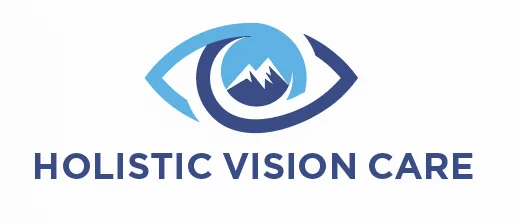The practice of traditional Chinese ophthalmology has been around for thousands of years, and it has had a lasting impact on the development of modern medicine. In this essay, we will explore the history of traditional Chinese ophthalmology, the benefits of its natural remedies and treatments, and the legacy that it has left on modern medicine. By examining the ancient practices and philosophies that make up traditional Chinese ophthalmology, we can better understand the impact and influence of this ancient practice on our current medical practices
The history of traditional Chinese ophthalmology is vast, and its roots can be traced back to ancient times. In a study published by Wang et al. (2010), researchers examined the ancient practices and philosophies of Chinese ophthalmology that have been passed down through the generations. The study found that the earliest Chinese ophthalmological literature dates back to the Shang Dynasty (1700-1046 BC). This literature mainly focused on the treatment of eye diseases, such as cataracts, conjunctivitis, and glaucoma. Traditional Chinese ophthalmology is based on the principles of Traditional Chinese Medicine (TCM), which emphasize the use of herbal remedies and acupuncture for treating eye diseases. The study also found that the ancient Chinese believed in the concept of “Yin-Yang”, which is the idea that opposites are interconnected and complementary. This idea was used in traditional Chinese ophthalmology to treat eye diseases. For example, a patient with myopia (cannot see far away, ie yang is too strong) would be prescribed herbs and acupuncture points that were believed to have a “Yin” quality, while a patient with hyperopia (cannot see close up, ie yin is too strong) would be prescribed herbs and acupuncture points believed to have a “Yang” quality. In conclusion, the study demonstrated that traditional Chinese ophthalmology is an ancient practice with a rich history and a unique approach to the treatment of eye diseases.
As you can see Traditional Chinese ophthalmology is an ancient practice that has been used for centuries to treat eye conditions. According to one study by R Xue et al. (2012), it is an effective treatment for a variety of eye diseases, including uveitis, glaucoma, cataracts, and age-related macular degeneration. By combining natural remedies such as herbal medicines, acupuncture, and massage therapy, Chinese ophthalmology changes the body by providing support for the root cause which in turn results in relief from the branch-symptoms and that can even lead to improved vision. The use of alternative and natural remedies has the added advantage that there is a reduced risk of serious side effects (unlike those associated with western alopathic treatments such as surgery, drugs, and laser therapy). In addition, Chinese ophthalmology can be used in conjunction with other treatments to provide a more comprehensive approach to eye care. For example, acupuncture can be used to reduce inflammation and increase circulation to the eyes, while herbal medicines can be used to nourish and protect the eyes from further damage, and lifestyle changes can reduce the body’s tendency to become inflamed in the first place. By exploring the benefits of traditional Chinese ophthalmology, patients can find relief from their eye conditions and enjoy improved vision naturally while improving their overall health, too! In other words, all boats rise together!
Traditional Chinese ophthalmology has had an incredible impact on modern medicine, with its legacy being felt in many aspects of modern ophthalmological practice. According to A Kleinman’s 1980 book, Chinese ophthalmology was developed in ancient China as a branch of traditional Chinese medicine, based on the principles of yin and yang and the five elements. This legacy has been influential in a number of areas, including the use of acupuncture and herbal remedies in ophthalmology, as well as the classification and diagnosis of eye diseases. The use of visual acuity tests and strategies for the treatment of cataract and glaucoma are also examples of ancient Chinese ophthalmology that continue to be utilized in modern medical practice. Furthermore, the Chinese developed various techniques for the treatment of eye conditions such as conjunctivitis, dry eyes, and even retinopathy, which have been adapted for modern use. By looking at the legacy of traditional Chinese ophthalmology, it is clear that it has had a major impact on modern medicine, leading to advances in the diagnosis, treatment, and prevention of certain eye diseases and conditions.
As I have shown Traditional Chinese ophthalmology has been practiced for centuries. It draws from traditional Chinese medicine (TCM) and specifically examines the eyes, their conditions, and the root causes to repair the overall system which results in improved eye health, ie fixing the root fixes the branch. TCM ophthalmology relies on a holistic approach to medicine, and views the eyes as an integral part of the body’s overall health and well being. Chinese ophthalmology seeks to treat specific ailments, maintain daily health, and manage trauma and environmental toxin exposure by incorporating changes to diet, exercise, breathing, etc. Traditional Chinese ophthalmology has also informed Western models of ophthalmological care, offering insight into the how the integration of diet and lifestyle practices can help support allopathic treatments and form the foundations of long-term eye health management.
As we have seen, traditional Chinese ophthalmology is based on a frameworks of TCM principles, which view the physical and mental components of the eye as inseparable from the rest of the body and inherently interdependent. The methods employed in TCM ophthalmology such as diet, physical activity, and meditation practices are designed to prevent disease progression and treat eye-related diseases and disorders, with the ultimate goal of preserving eye health in an ever-changing environment. With its contextual roots, holistic approach, and relevance to modern-day concerns, traditional Chinese ophthalmology offers a viable alternative for improving one’s eye health and promoting preventative measures for individuals and populations so that other diseases are avoided as well.
We welcome you to reach out for more information or to set up an initial consultation. We are looking forward to helping you and your eyes improve and helping you live the best life possible. Thanks for your interest!
You are welcome to reach out to us for more information or you can schedule a face-to-face initial consultation here.
Disclaimer
This website is for informational purposes only. By providing the information contained herein we are not diagnosing, treating, curing, mitigating, or preventing any type of disease or medical condition. Before beginning any type of natural, integrative, or conventional treatment regimen, it is advisable to see the advice of a licensed healthcare professional.
Work Cited:
Use of eye care services among diabetic patients in urban and rural China.
TCMID: traditional Chinese medicine integrative database for herb molecular mechanism analysis.





